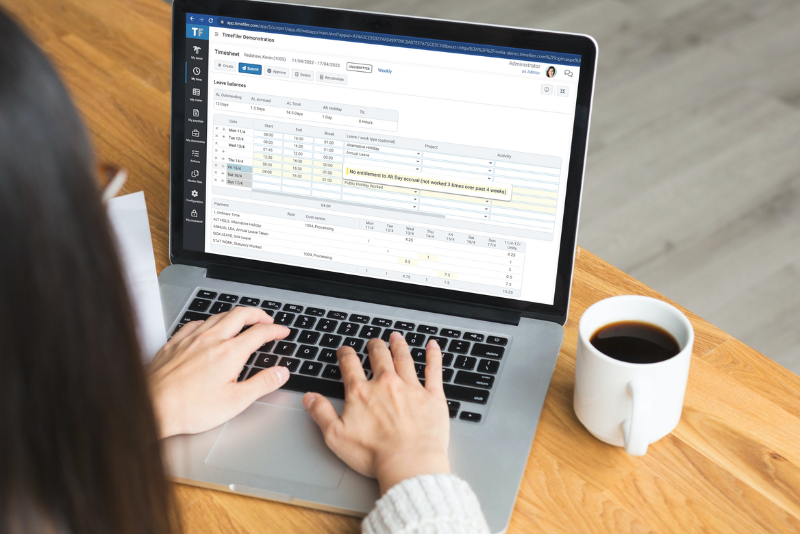Payroll is the lifeblood of any internal management system. Once in place, a payroll system becomes essential for a smooth business operation, keeping employees and management satisfied and (most importantly) paid. Because everyone wants to get their wages without a hitch — which means few businesses will tinker with what isn’t broken.
However, reluctance to change the payroll system shouldn’t come at the expense of better timekeeping. Ineffective timesheets cost hundreds, even thousands, for small-to-medium businesses a year — but as long as payroll isn’t affected, the loss is taken as a necessary evil.
But it really isn’t. The need to sacrifice accuracy for consistency is a complete fallacy. With TimeFiler, we can help payroll without touching or messing with the existing payment system. And it all has to do with the nature of web apps and their adaptability.
Synching data.
If timekeeping systems have let you down in the past, it’s probably because they run separately from payroll. Most time and attendance applications won’t bother to sync to a payroll system, relying on the manual reentry of data — another mounting cost in the life of a payroll department. The best of these might offer a manual CSV file which uploads basic employee details but little else. This leads to duplicated data entry and the risk of a mismatch between the new timekeeping system and payroll. Hence, timekeeping gets the chop.
New timekeeping applications mean a complete integration of payroll and time management without the risk of compromising the system that keeps everyone paid on time. TimeFiler does this by syncing data uploaded from its customers between its own application and the payroll system, as well as generating the payment export to the payroll department. This allows TimeFiler to capture the most accurate records possible, incorporating the right information from its users and minimising any potential errors.
The integration process.
As a web-based app, TimeFiler is completely adjustable in how it talks to payroll software. It’s designed to be used across multiple devices and browsers, using a PWA (Progressive Web App) approach that maintains the same code across native applications or cloud-based solutions. But saying it’s that easy minimises the amount of time we spend helping our customers set TimeFiler up.
Every company and payroll system has its preferences, which is why we spend a lot of time at the start helping our clients set up TimeFiler. Integration is at the core of a good system, deserving the same level of scoping detail as what the system will actually do with the data provided.
At TimeFiler, we’ll scope integration with the payroll in order to automate the process as much as possible. Some payrolls offer better integration than others, so we’ll use our kit bag of experience to ensure a smooth, automated and resilient integration period.
From this outline, we build a system they can test before they go live. During this period of grace, we’re ultra-contactable, helping test, tweak and iron out any unforeseen problems that have cropped up. Without disrupting the normal flow of work very much, the client has a new time-tracking system running alongside their existing payroll.
But we don’t just leave it to pay people on time. The multiple rules and regulations surrounding payroll mean it’s far easier to calculate what someone’s owed from their timesheet, as opposed to fixing inconsistencies between timesheet and payroll. How TimeFiler tackles this problem, you can find out in the second part of our two-part blog.
You May Also Like
These Related Stories

Construction management software: 5 reasons to choose COINS

How to Improve Employee Productivity with TimeFiler: A Comprehensive Guide
